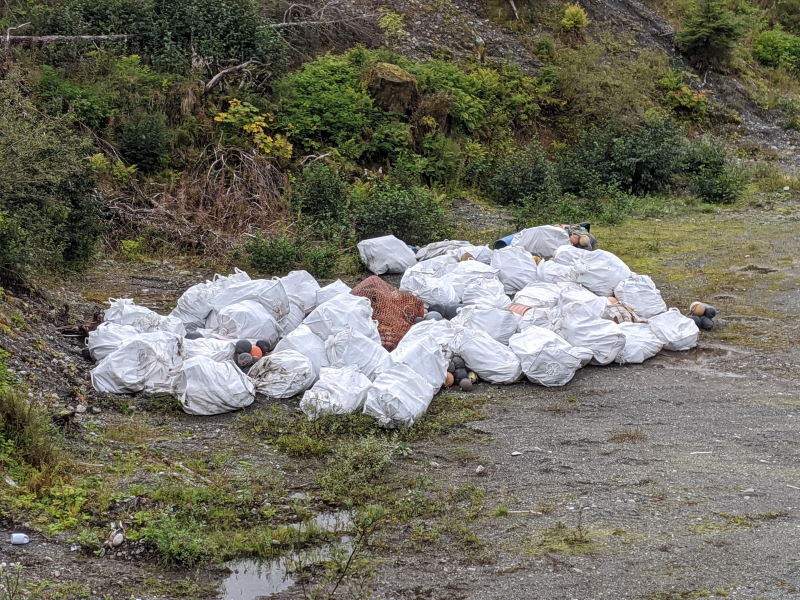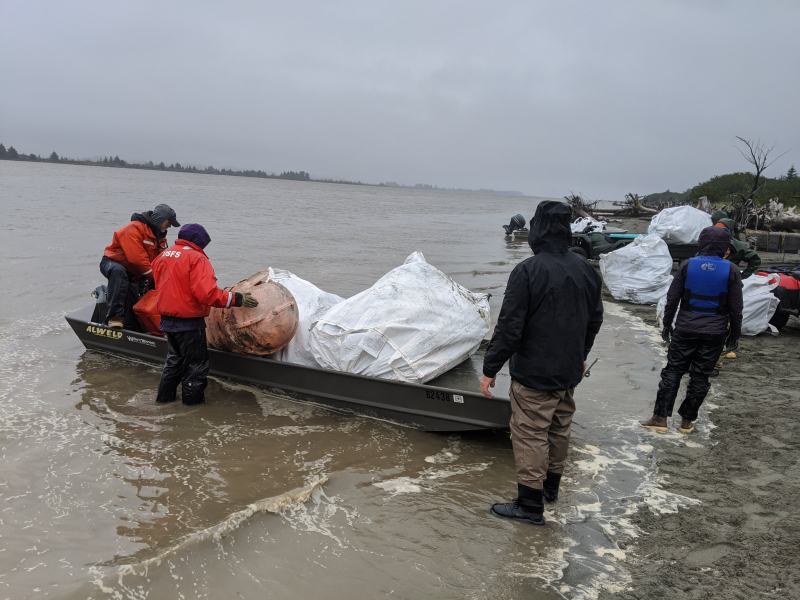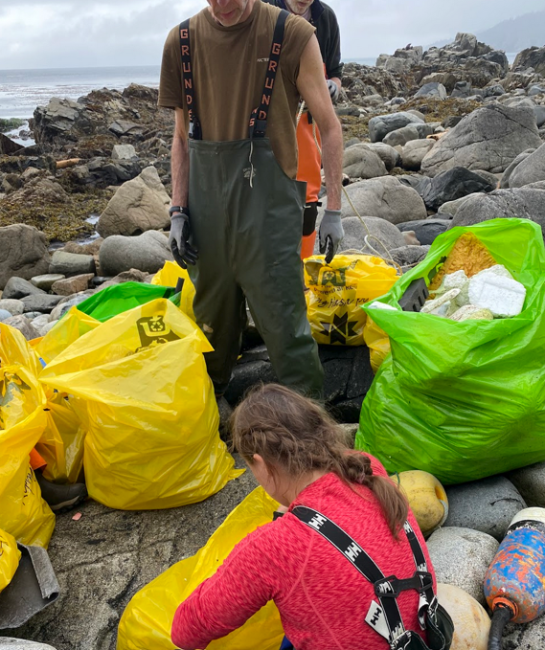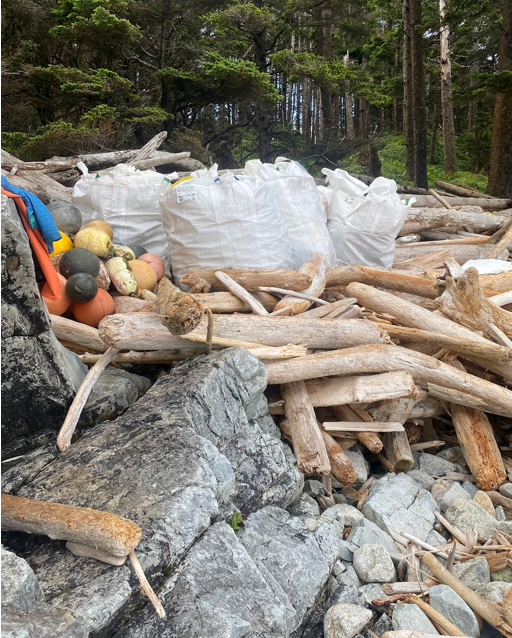When people think of Alaska, many images may come to mind: jagged mountains, majestic glaciers, rugged shorelines, rich and diverse wildlife and habitats, and vast wilderness. These are all things that can be found in Alaska, which takes its name from “alaxsxaq” in Aleut, one of more than 20 native languages spoken in the state. It is a land of scale and superlatives, the largest state in the United States by area and larger than the next three largest states combined, with 17 of the 20 tallest mountains, and over one third of the total shoreline in the United States. Its position in the North Pacific makes it home to some of the most productive and critical fisheries in the United States, and the world. This same position, combined with its vast scale, ocean current and wind patterns, and the growing maritime transport and fishing activity in near and distant waters, also means huge amounts of marine debris arrive on Alaskan shorelines every year.

The same realities that make Alaska so unique also make it an especially challenging place to address the impacts of marine debris. Alaska is over 16% of the total landmass of the United States but has less than 0.5% of its roads. Over 85% of municipalities in Alaska are only accessible by air or sea, including the state capital, Juneau. Debris predictably aggregates on many “catcher” areas where current and wind patterns direct debris on a consistent basis, and many of these are multiple days travel by boat from the nearest permanent community. Additionally, many landfills in Alaska are closed to marine debris, as they were designed and constructed to handle the waste management needs of the local population, rather than the influx of thousands of pounds of mixed marine debris that make their way to shorelines. Combined, these realities create additional complexity and challenges in reaching, removing, and disposing of debris.
Fortunately, there is an active, innovative, and dedicated community of individuals and organizations working on the marine debris issue across the state of Alaska, ranging from the islands off of Southeast Alaska spanning all the way up north to the Chukchi Sea. This community was established through the hard-fought experiences gained by pioneers who have been working in the Alaska marine debris space for decades and is continuing to grow with new groups, ideas, and energy. Groups and communities often have nuanced local knowledge of conditions, patterns, and history, gained over years and even generations, that allow them to operate most effectively and identify signals and trends in debris. This combination yields inventive ideas and impressive results that solve problems and overcome obstacles across many different types of debris and debris projects. The NOAA Marine Debris Program is proud to partner with and support a number of these efforts across Alaska.
Removal is a core activity in Alaska, with groups working across the state to collect debris with varying methods suited to local conditions and opportunities. Off of Southeast Alaska, the Alaska Department of Fish and Game has worked with volunteers to collect debris from important habitat on Gasḵúu, or the Forrester Island Complex, partnering with Alaskan fishing and shipping industries to aid in transport and disposal. In Yakutat, a coalition of partners, led by the City and Borough of Yakutat, has leveraged local volunteers across the local and regional community to remove debris from known hot-spots in the first of a two-year project. On the Alaska Peninsula, the Ocean Plastics Recovery Project is conducting cleanups to remove debris and working with academic and industry partners to evaluate alternative methods for recycling plastic debris into commercially viable products. In the Pribilof Islands, the Aleut Community of St. Paul Island is leading efforts to remove debris from St. Paul, St. George, and Otter Islands, paired with the use of small UASs (uncrewed aircraft systems) for debris quantification and prioritization.
Looking beyond removal, the community knows that preventing the introduction of new marine debris is the long term solution to the issue. That is especially true with the high cost of removal on remote shorelines, and the reality that a significant portion of debris on many Alaskan shorelines comes from distant sources. Groups in Alaska are working to reduce marine debris of local concern through projects that aim to prevent it, while also gathering information that can aid the prevention of debris introduction beyond Alaska. The Aleut Community of St. Paul Island is partnering with the local community and Bering Sea fishing industry to explore alternatives to packing bands, which are especially harmful to marine mammals and wildlife when lost. The North Slope Borough is working to reduce single-use plastic debris through marine debris lessons, experiential cleanups, and data collection in the eight communities of the Borough.

From research to removal, and from the Arctic to Southeast Alaska, there is an active and growing marine debris community across Alaska. The NOAA Marine Debris Program is grateful to partner with this community in our shared vision of a sea free of the impacts of debris. Stay tuned to our blog and social media over the coming weeks to hear more about and from our partners doing the important and hard work of tackling debris in The Last Frontier.


